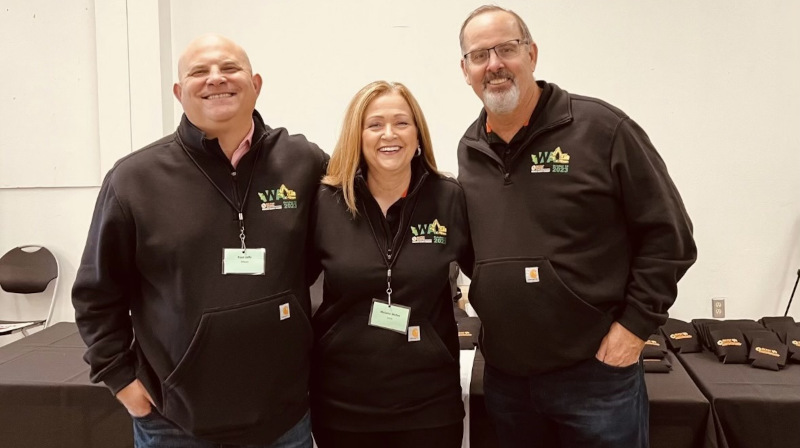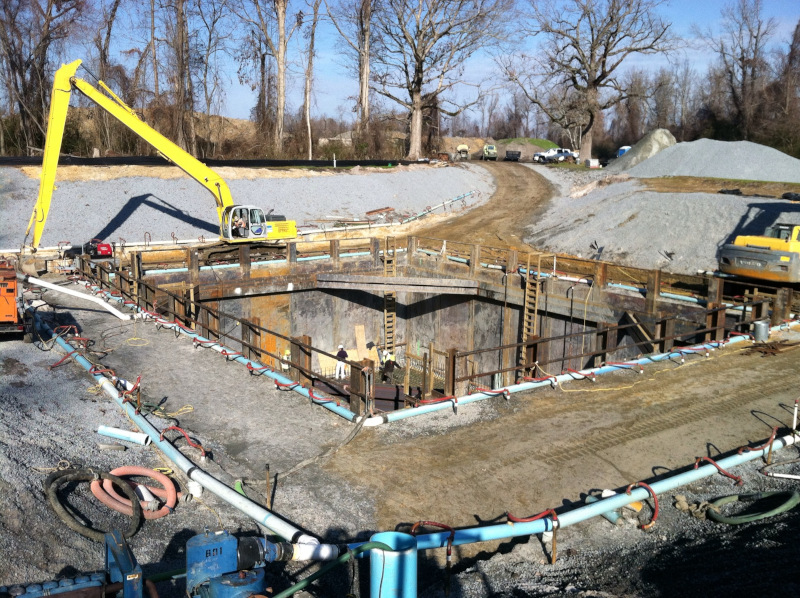North American Excavation Shoring Association (NAXSA)
Digging Deep into Trench Safety
Saving lives and transforming safety standards in the high-risk world of trench work.
The North American Excavation Shoring Association (NAXSA) has carved out a unique and indispensable role in an industry fraught with high-risk dangers. With trench collapses being a significant hazard in the construction industry, NAXSA’s mission centers on preventing such incidents through education, training, and advocacy. At its core, the association is driven by a singular mission: saving lives in the trenches. From the outset, Executive Director Melanie McKee is clear that NAXSA’s work is a blend of advocacy and education but with a pragmatic edge that permeates all its initiatives. “We advocate for the training and safe use of excavation and shoring,” McKee says. “The goal is simple but critical: we want to prevent anyone from being killed in trenches.”
However, McKee is quick to point out that while NAXSA may appear small in membership size, its reach extends far beyond that. With just one staff member—the Executive Director herself—the association relies heavily on its members to drive education initiatives and serve as the heartbeat of its operations. “Our members are very active in the whole process because we are very small,” she emphasizes. This unique model allows NAXSA to focus its energies where they matter most: directly impacting worker safety on the ground. McKee adds that NAXSA collaborates closely with government bodies like OSHA, operating within an alliance to amplify education on trench safety across the industry.
Ryan Jaffe, NAXSA’s president, builds on this sentiment. He points out that the association’s modest size doesn’t reflect its true influence. “We might be around 50 company members, but through the Hundreds of branches nationwide, our expertise in shoring, supply, engineering, and manufacturing reaches every corner of the country,” he says. This seemingly small association, through its expansive network, wields considerable authority in its advocacy for best practices in trench safety. Jaffe highlights the importance of this expert-driven approach: “We are experts in our field, and we want to give that expertise to the people we serve—our customers, OSHA, and other organizations—so that their jobs run efficiently and safely.”
Kevin Malloy, Immediate Past President and Co-Founder of NAXSA, offers a practical perspective on how far-reaching NAXSA’s influence is. “One of our founding members is United Rentals, the largest rental company in the world. They have about a few hundred branches just in their trench safety division alone, with thousands of employees,” he explains. The presence of such large players in the association amplifies NAXSA’s ability to spread its message. Malloy’s company may be smaller and family-owned, but alongside large national brands, it plays an equally crucial role in furthering the association’s primary objective: reducing trench collapses and saving lives.

Left to Right Ryan Jaffe, NAXSA President, Melanie McKee, NAXSA Executive Director, Kevin Malloy, NAXSA Immediate Past President
Safety, Liability, and the Role of Technology
As NAXSA continues to make strides in improving trench safety across North America, its focus on reducing fatalities and injuries has become a key indicator of the association’s success. In 2022, NAXSA tracked 47 deaths related to trench cave-ins, with that number dropping to 29 the following year. While exact numbers for 2024 are still being tallied, McKee emphasizes the importance of the detailed data pulled by Steve Hanley in NAXSA’s “Tips from the Trenches” report, which is circulated to members regularly. “We don’t have this year’s number yet,” she admits, “but we’re continuing to monitor and share this information with the industry.”
This focus on safety is woven into every aspect of NAXSA’s work, from training initiatives to the day-to-day interactions between members and their customers. Jaffe highlights that NAXSA members, particularly those on the supply side, are responsible for educating contractors. “Our members have the outreach to show customers how to use the gear,” Jaffe explains, “whether it’s a small or big operation, we’re there to ensure best practices are followed.” This hands-on guidance is critical in preventing accidents on the job, especially in an industry where safety standards can often mean the difference between life and death.
Malloy takes the discussion further by connecting NAXSA’s safety initiatives with the broader issue of liability in the construction industry. He points out that excavation contractors face significant risks when digging trenches because the ground is inherently unstable. “The earth wants to repair itself, just like a wound on your arm,” he says, noting that the potential for collapse is ever-present without proper shoring. This reality makes safety protocols, like those mandated by OSHA, non-negotiable. As Malloy explains, OSHA requires contractors to obtain a permit before digging, and a crucial part of this process involves identifying a “competent person” on-site. “That person must have the experience and authority to recognize hazardous situations and take corrective action to ensure everyone’s safety,” he says.
NAXSA plays a pivotal role in helping contractors meet these regulatory requirements by offering “competent person” training to its members. “Our members provide the training so their customers can fulfill OSHA’s requirement of having a competent person on-site,” Malloy says. However, he is quick to draw a line between education and direct liability. When asked whether NAXSA members ever step into the role of the competent person themselves, Malloy is firm: “We do not play that role,” he says. While NAXSA members can offer guidance on best practices and help contractors choose the right shoring equipment, stepping in as the competent person presents a risk. “Our insurance companies would have an issue with that,” he admits.
Technology also plays a more significant role in trench safety, particularly regarding tracking compliance and reducing insurance liabilities. Safety apps that track compliance with OSHA’s trenching rules are becoming more common, and NAXSA is paying close attention to how these tools can help streamline the safety certification process. While NAXSA doesn’t directly implement these technologies, Malloy acknowledges their growing influence, particularly in the context of insurance coverage. “These apps are being used increasingly,” he says, noting that many of NAXSA’s contractor customers are integrating them into their safety protocols to minimize risk exposure.

Trench Safety Summits and Expanding Outreach
NAXSA has built a reputation not just for advocating safety standards but also for creating tangible, hands-on learning experiences that bring the industry together. A major part of this effort is the annual Trench Safety Summits, events designed to educate and demonstrate best practices for workers on the ground. These summits, which began in 2018, bring together industry competitors and stakeholders to collaborate on safety education.
Each year, the summits are held in different locations to maximize regional participation. McKee notes upcoming events in Pennsylvania and Florida, along with a March summit in Southern California which is poised to be a record-setting event. “It should be a record-setter if we do it right,” Malloy says optimistically. With attendees ranging from 300 to 500 people, these summits serve as a vital platform for educating contractors, emergency personnel, and other key players in the excavation field.
Malloy emphasizes the unique role the summits play. “The biggest part of our mission is getting the word out and educating people,” he states. Misconceptions about the cost of shoring equipment often cloud the decision-making process, especially among contractors in rural areas who may have never seen a trench cave-in. “Most contractors, when they don’t use shoring, it’s not because they’re trying to save money,” Malloy clarifies. “They’re just unaware of the risks because they’ve been digging trenches all their lives without an issue.”
The focus on education extends beyond the summits. NAXSA members also provide thousands of hours of “competent person” training annually. These sessions equip contractors with the skills they need to comply with OSHA regulations, which require that a trained, knowledgeable individual be present on job sites to identify potential hazards and make necessary adjustments. As Malloy notes, “This competent person training is vital to protecting workers, and sometimes even adjacent structures, like buildings near a dig site.” A nearby building can easily collapse along with the trench itself without proper shoring.
Jaffe, too, highlights how NAXSA has stepped up its outreach. “It’s about awareness,” he says, pointing to the growth of the Trench Safety Summits and other educational initiatives like Shore Safety Week, which began two years ago. Shore-Up For Safety Week allows NAXSA members to engage with their customers directly, providing everything from quick 15-minute toolbox talks to full-day in-person training sessions. “It’s just another outreach that our members are offering to keep the industry safe,” Jaffe explains, underlining the association’s broader mission.
Building Momentum: Growing Safety Initiatives and Strengthening Alliances
As NAXSA looks ahead, its key initiatives for the next 18 months are focused on expanding both outreach and membership while solidifying its role as the go-to resource for trench safety. McKee outlines several priorities, emphasizing the importance of growing existing programs like the Trench Safety Summits and the Shore- Up for Safety Week initiative. “We’re trying to spread and grow those,” she says, noting that Shore- Up for Safety Week has already gained traction despite being a relatively new program. The goal is to host even more summits, adding to the three already planned, and reach new companies across the industry.
For Jaffe, continuing to build NAXSA’s brand is just as crucial as expanding its programs. He believes that strengthening the association’s name recognition will reinforce its authority and reliability in the industry. “When they see the NAXSA symbol or hear our name, they should immediately know what we stand for,” he says. Over the past decade, despite challenges like COVID-19 and industry consolidation, Jaffe feels that the association’s presence has only grown stronger. He sees NAXSA’s brand identity becoming synonymous with safety expertise, a reputation the association has worked hard to cultivate. “If you need answers or help, they should be reaching out to us at all times,” he adds.
Malloy is enthusiastic about the future, especially the growing influence of NAXSA’s alliance with OSHA. He describes the partnership as a vital tool in advancing the association’s mission of achieving zero deaths and injuries in trench work. “I think we’re really going to start gaining momentum with this,” Malloy says, highlighting that the alliance gives NAXSA direct access to OSHA officials, which can significantly amplify their safety efforts.
The direct connection with OSHA helps NAXSA stay ahead of regulatory changes and reinforces its role as an industry leader in safety education. By leveraging these relationships, NAXSA is better positioned to inform its members about potential risks and help them avoid costly and dangerous mistakes on job sites. Malloy sees this as a pivotal step toward achieving NAXSA’s larger goal: ensuring that every trench worker goes home safely at the end of the day. “That’s the power this alliance gives us,” he says, summing up the importance of this growing partnership.
AT A GLANCE
North American Excavation Shoring Association (NAXSA)
What: A leading association focused on trench safety and excavation shoring standards
Where: United States and Canada
Website: www.naxsa.org


